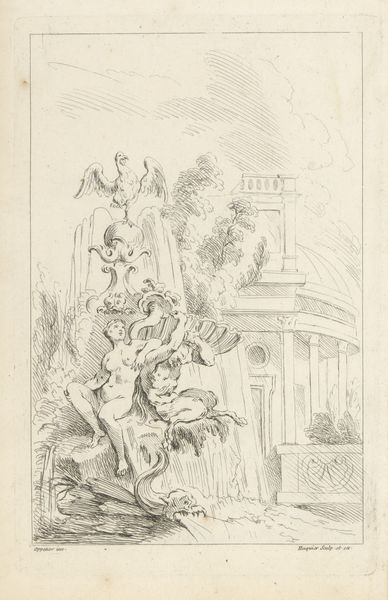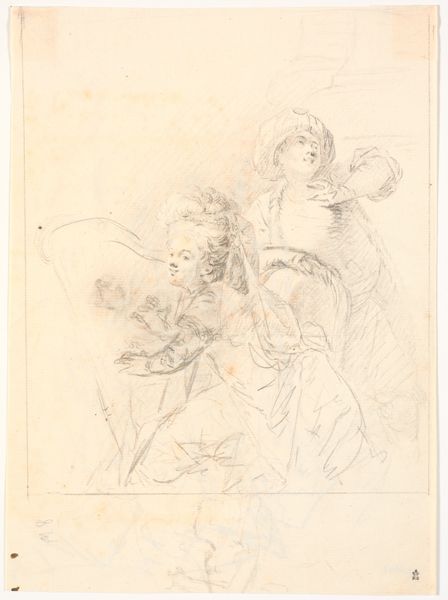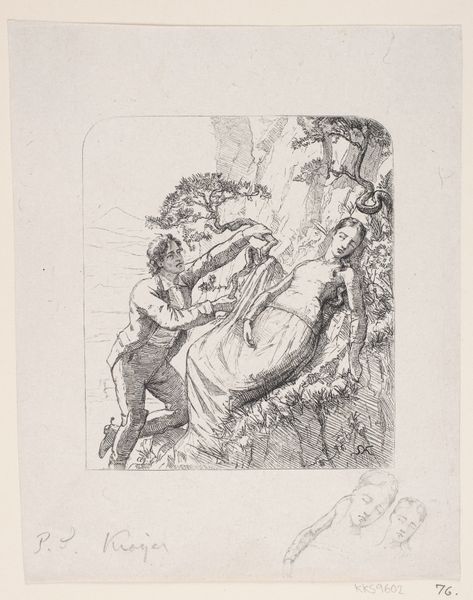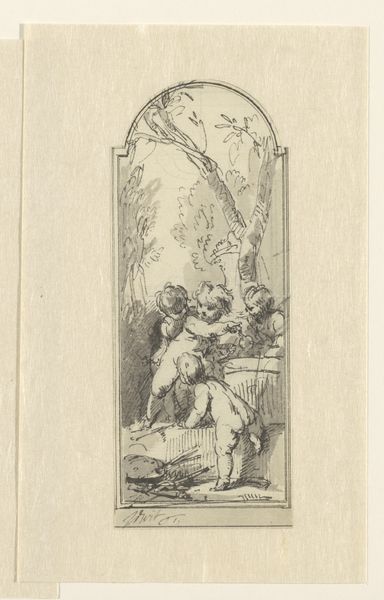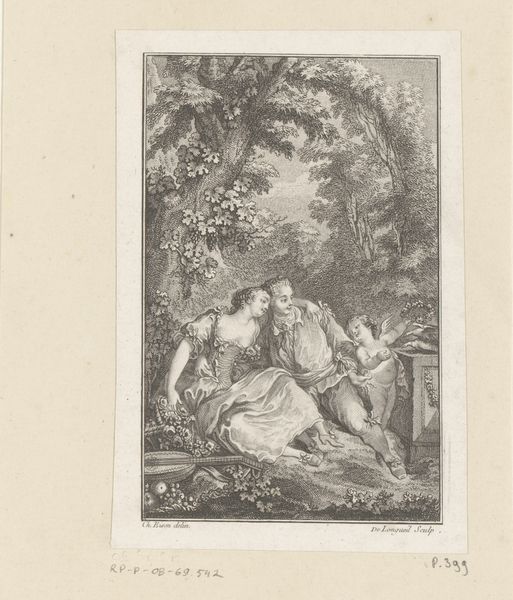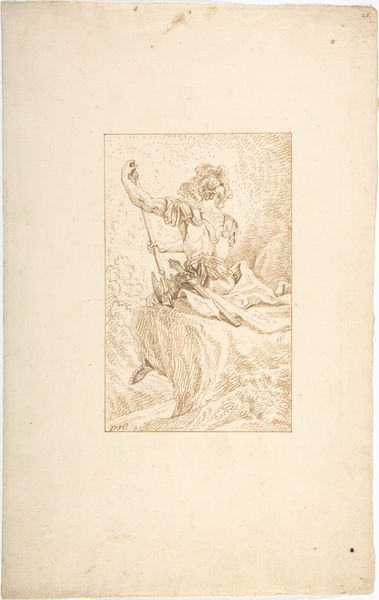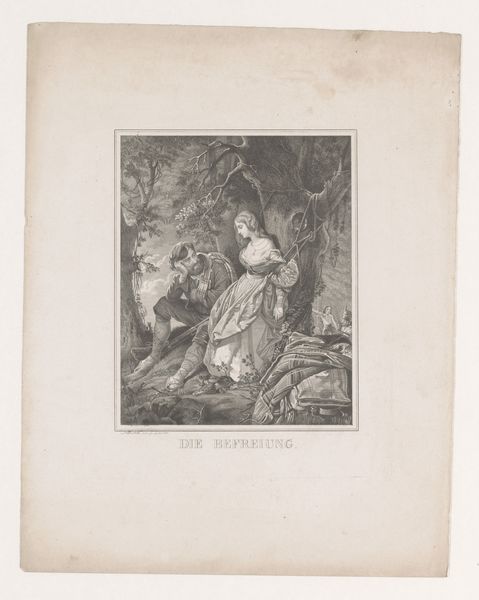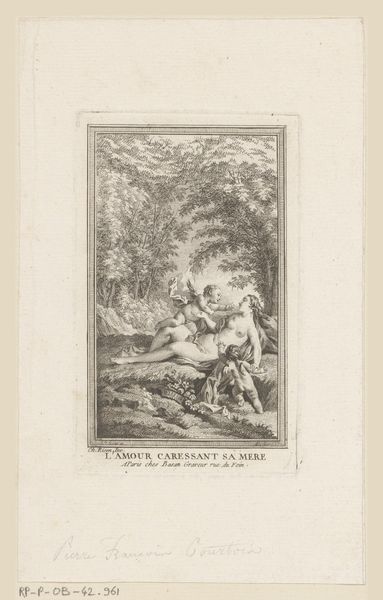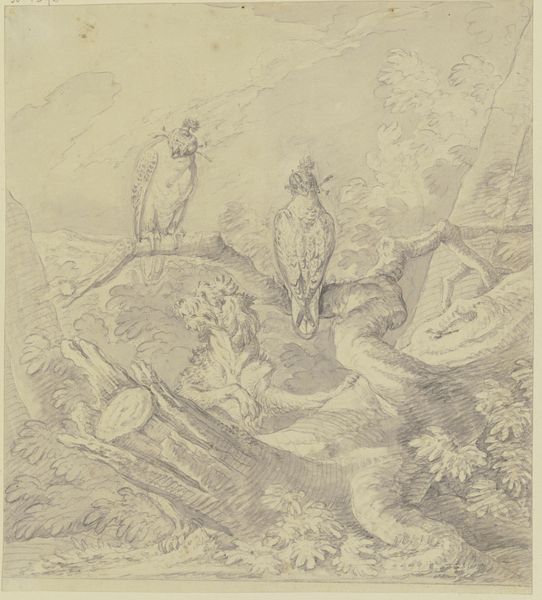
drawing, pencil
#
portrait
#
drawing
#
etching
#
pencil
#
genre-painting
#
northern-renaissance
#
rococo
Dimensions: height 327 mm, width 208 mm
Copyright: Rijks Museum: Open Domain
Editor: This preliminary sketch by Dionys van Nijmegen, titled "Design for an overdoor: boy and girl with flower basket," was made in 1756 using pencil and etching. It's hard to discern every detail, but a sense of serene charm comes through. I'm particularly intrigued by the way the figures are placed within a hazy garden backdrop. How do you interpret this work, with its somewhat obscured details? Curator: Well, this image pulls at various threads of cultural memory. We see the children holding a basket overflowing with flowers. Flowers, across many cultures, often represent transient beauty and the fragility of life, evoking sentimental emotions. The "overdoor" designation also hints at a very specific location within the domestic space, acting almost as a silent guardian of the threshold, doesn’t it? What kind of protective symbolism might we associate with this imagery? Editor: Protective symbolism? Perhaps these children with the basket are meant to symbolize a sense of innocence and well-wishing for those who pass underneath. The home as a safe haven. Curator: Exactly. And notice how the boy and girl are depicted. The era valued childhood innocence, presenting children as morally pure figures. Do you see this echoed anywhere in their poses, attire, or even gaze? Editor: Yes, their faces seem almost angelic, especially compared to other styles of the time that would represent the youth with more sophistication. Curator: Precisely. And the ethereal garden, rendered almost dreamlike, adds another layer. The boundary between idealized nature and domestic life becomes blurred, representing perhaps the home as an extension of Paradise or a haven from the outside world. It asks us: Where does protection come from, really? Is it divine, natural, or something entirely fabricated within these cultural ideals? Editor: This has offered such valuable insight. It highlights the artwork’s connection to concepts beyond just aesthetic beauty. Thank you. Curator: Indeed. This is what truly enables artwork to remain timeless, continuing to trigger cultural meanings.
Comments
No comments
Be the first to comment and join the conversation on the ultimate creative platform.
